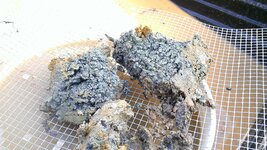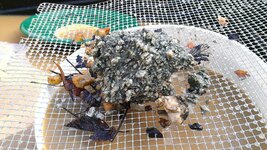jmkesler
Jr. Member
I have access to some family owned land in the county of Rowan in North Carolina and need some help with prospecting. Apparently there were at least 3-4 open pit and/or vertical shaft mines on the land in the 1800's but were never registered... and as such, no written history appears to be available. My Great grandparents found them when they bought the land and my great aunts and uncles remember the pits were about 30 feet wide and the shaft farther than you could see. They of course then filled them up trash back in the 1920's. Anyways, we are in gold country so I thought I'd see what was left. I haven't checked the remnants of the pit or the shaft but I have found some small gold in the small spring fed creek that goes through the property. My question is how to best get to it and what dirt/clay is best to process. The creek is old and doesn't have much water flow per say as it only begins about 300-400 yards away from our land. The origin is literally across the street. So there is not much in the way of gravel or sand bars and or typical places to look. This video is a view of the dark blue clay that lines the creek in most places and is full of quartz and other rocks. Is this the Blue Lead? I'll post a video of the creek soon.
Here's a link to the video on youtube:

Here's a link to the video on youtube:


Upvote
0


 ?
?
